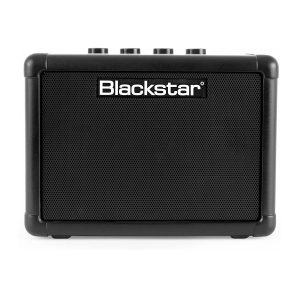
- Digital «Tape» Delay Effect
- MP3/Line In For Jamming Along Or Listening To Music
- Patented ISF
- 12” Fender Speaker
- Reverb, Delay/Echo, Chorus, Tremolo, Vibratone Effects
- Two Channels, Single Input
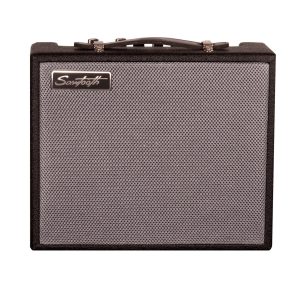
- 6.5″ Speaker
- Chroma Cast 10Ft Instrument Cable & Pick Sampler
- Controls: Volume, Gain, Drive
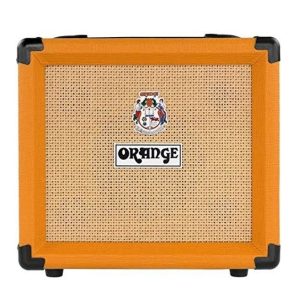
- 2 Foot Witchable Channels
- Speaker: 1×8 Inches Orange Voice Of The World
- Built In Reverb And Tuner
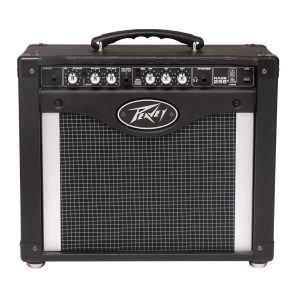
- 3-Band EQ
- Two Witchable Channels – Clean And Lead
- 8 Inch Blue Marvel Speaker
Choose the Best Metal Amp Under $200
Customer’s Choice: the Best Rated Metal Amps Under $200
12 users answered this survey. Please help us improve this review!
An amplifier is basically an electronic device that increases the amplitude of a signal. An amp has to be plugged into another external speaker, which will then reproduce your guitar sound through its speakers. You can also use headphones instead of external speakers for private listening purposes. A guitar amplifier is used to amplify the signal of your electric guitar.
Nowadays, amplifiers are mostly made in solid-state instead of vacuum tubes that used to be standard but they provide great advantages that make them very popular among musicians. Solid-state amps have fewer moving parts and use less power than tube amps making them more reliable.
Are you a metalhead looking for the best amp under $200? Have you been trying to find an amp that is perfect for your needs but has had no luck so far? If yes, then this guide will help. Here metal music experts have reviewed some of the best amps on the market and provide tips on how to choose one for your needs. With these reviews and tips, you can find a great amplifier without breaking the bank!
Table of Contents
Blackstar Electric Guitar Mini Amplifier – the Editor’s choice!
 The Blackstar Fly 3 Mini Amplifier is the perfect portable amp. Its lightweight, compact size means you can tote it around in your rucksack or satchel without any hassle. The MP3 input makes it even more convenient – you don’t need to go lugging an entire amp case anywhere! Plus, with a 5-year warranty (and shockingly reasonable price), there’s no excuse not to try this out for yourself.
The Blackstar Fly 3 Mini Amplifier is the perfect portable amp. Its lightweight, compact size means you can tote it around in your rucksack or satchel without any hassle. The MP3 input makes it even more convenient – you don’t need to go lugging an entire amp case anywhere! Plus, with a 5-year warranty (and shockingly reasonable price), there’s no excuse not to try this out for yourself.
At only 170 mm x 126 mm x 102 mm, Fly 3 is a light, compact electric guitar amplifier so you don’t have to carry an amp case around. With the MP3 player input, you can always plug in your phone and rock out!
This handy little amplifier by Blackstar is light enough to carry around like a hiker would with their backpack. But don’t let its size fool you; it packs plenty of power for smaller groups or home use.
Fender Champion 40-Watt Electric Guitar Amplifier – the best for versatile built-in features!
 Fender Champion 40-Watt Electric Guitar Amplifier is a high-quality, affordable amplifier that any budding guitarist will love. It is perfect for small venues and rehearsals as it can be transportable but still produces great sound with up to 80 different built-in effects and amp modeling functions and over 20 clean and distortion settings.
Fender Champion 40-Watt Electric Guitar Amplifier is a high-quality, affordable amplifier that any budding guitarist will love. It is perfect for small venues and rehearsals as it can be transportable but still produces great sound with up to 80 different built-in effects and amp modeling functions and over 20 clean and distortion settings.
When you’re just starting out your goal is to find your signature sound which you do by experimenting with the wide range of tone options this amp has on offer. It pairs well with any Fender guitar because it completes the classic Fender sound without exception, giving off tons of tonal versatility at an incredible price!
Capture your sonic signature with this Fender Champion 40-Watt Electric Guitar Amplifier. The clean and overdriven sounds that it is capable of being startling, making it more than just one amp.
This portable amplifier ties into any Fender guitar to complete the classic sound you’re looking for. With its easy weight and size, you can take it anywhere to rehearse or play around with your tone – while still being powerful enough to handle bigger performances!
Let the Champion 40 by Fender be your musical soulmate. It offers a huge range of built-in effects and portability, making it perfect for rehearsal and performing at any location in need of quality music.
Sawtooth 10-Watt Electric Guitar Amp – the best for durable construction!
 Your guitar wants to be heard, but you always need help. That’s where the Sawtooth 10-Watt Electric Guitar Amp comes in! Robust construction and clean tones make this amp perfect for beginners looking to get out of their bedrooms.
Your guitar wants to be heard, but you always need help. That’s where the Sawtooth 10-Watt Electric Guitar Amp comes in! Robust construction and clean tones make this amp perfect for beginners looking to get out of their bedrooms.
With simple controls allowing you to adjust bass, mid-tones, and trebles, a 6.5-inch speaker delivering surprisingly loud volume for such a small amp so your guitar can stand beside vocals on stage with ease!
Small enough to carry anywhere, this adorable amp is a surprisingly powerful little device. At only 10 watts, the Sawtooth packs a punch that’s louder than you might imagine. You can play it quietly for your music teacher, or crank up the volume and feel the sweet resonance overtake a party with its sharp sound. With a push of a button, you can switch from clean mode to overdrive mode for those high-energy performances!
The Sawtooth 10-Watt Electric Guitar Amp packs a serious punch for such a small package. It offers huge volume from its compact and lightweight build, not to mention the ease of use with simple controls. The push-button switch between clean and overdrive enables the user to easily generate a variety of tones that suit every playing style.
Orange Amps Electric Guitar Power Amplifier – the best for the built-in reverb!
 The Orange Amps’ 20-watt RockerR electric guitar amplifier is sleek, rugged, and ready for the spotlight. In the box with your amp, you get both an 8-inch custom Voice of the World speaker and a footswitch, allowing you to switch from one channel to another at will with ease.
The Orange Amps’ 20-watt RockerR electric guitar amplifier is sleek, rugged, and ready for the spotlight. In the box with your amp, you get both an 8-inch custom Voice of the World speaker and a footswitch, allowing you to switch from one channel to another at will with ease.
The Orange Amps Electric Guitar Power Amplifier has a great sound through the speaker with its power of 20 watts. Just select one of the 2-foot switchable channels with their individual gain, volume, reverb controls, and 3 band EQ. It also comes with an inbuilt reverb that provides both timing delay and hall echo effects.
The Orange Amp Electric Guitar Power Amplifier is perfect for the guitarist who needs simplicity and great sound. With features like a custom 8-inch Voice of the World speaker, simple controls, and a jack for optional footswitch, this amplifier can’t be beaten!
Peavey Rage 258 Guitar Combo Amp – the best for the clear tone!
 Do you need a new amp? Sound your best with the help of the Peavey Rage 258 Guitar Combo Amp! This portable option is perfect for musicians of all skill levels. The amplifier delivers high volume and a clear tone in any setting.
Do you need a new amp? Sound your best with the help of the Peavey Rage 258 Guitar Combo Amp! This portable option is perfect for musicians of all skill levels. The amplifier delivers high volume and a clear tone in any setting.
With one 8 inch Super-duty Blue Marvel speaker, two switchable channels (clean and lead), three-band EQ, 1/4 Aux input, and a modern/vintage voicing switch you’ll be ready to take your performances to the next level.
The affordable price tag makes this combo amp an easy choice as well as the durable material that allows for portability.
This Peavey Rage 258 Guitar Combo Amp is great for the musician who needs something dependable to take on the go. Whether you’re trying to save space or just want an easy grab-and-go amp, this combo has your back.
Peavey Rage 258 guitar amp is perfect for players who need power and perfection. This two-channel amp serves up warm tube sound in addition to modern tones, you can always find the right style for your melody.
The Buyer’s Guide
Main Features:
- Speaker Size
The first thing you need to understand is speaker size and wattage. The size of the speaker will be listed in inches, usually around four or eight for subwoofers. Speaker amps are measured by watts, not inches.
For example, if a 100-watt amp has one four-inch woofer then it would equal 25 watts per channel with an impedance of 2 ohms.
If there were 3 channels on that same amplifier each channel would have only 12.25 watts since they’re being divided between all three speakers which equal about half as loud as having it run off one speaker alone–not very impressive! That’s why most people recommend getting at least 50-75% more power than what you think you’ll need as a minimum.
There are two passive speaker options to consider full-range and component speakers – both of which have good, bad, and ugly points.
Full-range speakers come with both the woofers for lows and tweeters for highs already included in one package so they don’t require an amplifier at all unless you’re looking for more power or better sound quality than what’s available from factory radios. The downside is that most factory radio amps put out only about 20 watts per channel into 4 channels (80 total) while high-end aftermarket head units run up to 80 watts on each individual input.
That means if your goal was 100 watts RMS per side before adding amp it would take either 6 four-inch speakers, 4 six-inch speakers, or 3 eight-inch speakers to get a good sound. Component sets include the same tweeters and woofers as full range but also come with their own external amps so you can control both volume and crossover points separately from your head unit – the downside is that it’s another device to mount plus all those extra wires everywhere!
Watts are what make things loud not speaker size alone. For example, if there were two identical subwoofers of each different size sealed in separate boxes then they would be equally efficient because the air pressure inside a box doesn’t affect output until it changes which would only happen when going through the port since it tuned at exactly half wavelength of any frequency playing (regardless of size). However, the bigger one would play lower and at higher volume levels without distorting.
The same holds true for speakers, which is why a 4-inch speaker with 2 watts will be louder than a six-inch speaker getting only one watt even though both are rated as having the same efficiency! That’s also why there isn’t much point in using an amplifier that doesn’t put out enough power to actually run them loudly – that way you’re not going to get any more sound pressure level (SPL) than what your head unit puts out except maybe some added low end since bass frequencies don’t need nearly as much juice to drive.
- Power
The power of an amp should be one of the main criteria when choosing your next metal amplifier. If you are playing in a band, it’s likely that there will already be some sort of demand for how loud amps can go and whether they have enough top-end sound quality to play alongside other instruments on stage at live venues.
In addition, most musicians don’t just want their amps to look great or create a perfect tone – they also need them to project well so all members of the audience can hear what they’re doing during their performance!
Here is what you should remember:
- Power is measured in watts;
- A lower wattage amp will need to be turned up louder for the same volume but could have a better tone at low volumes and not break up too much when you crank it;
- Higher watt amps can often produce their best tones at more moderate volumes so they don’t create unwanted noise or feedback, with plenty of headroom available if you want to use distortion pedals;
- Some amps don’t produce a lot of distortion and can be hard to turn up loud, but on the other hand, they might not need pedals as much due to their great tone;
- If you want more bass response from your amp but still want it to sound clear at high volumes, choose an amp with plenty of wattage power or even one that has two ‘channels’ so you can switch between clean/distorted tones;
For metal guitarists wanting huge sustain and lots of volume control without losing clarity at all frequencies, think about investing in a tube amplifier – these are often very heavy though! They also use valves that require regular replacement (around every 300 hours) and cost extra money for new ones when they burn out.
- Amp Modeling
Amp modeling is a technology where the sound goes through computer software and effects, such as distortion or delay pedals, are applied before it reaches your ears. This allows for more precise control over how an amplifier will sound. Because multiple engineers have created presets that model amps from past eras of music history to present times.
Most people think this limits creativity since they can’t change so many different variables on their own anymore – but a lot of guitarists would argue otherwise! In fact, recent advancements in digital recording mean that some artists even prefer using amps with built-in models rather than amplifiers without them just to get certain sounds out of specific songs. You may consider this cheating, but it’s simply the evolution of music production.
Amp modeling is not perfect, however. No matter how advanced technology becomes, there are still some things that engineers just can’t reproduce perfectly in software yet which means certain effects will always be inferior when put through amp modeling instead of hardware modeling (the similar situation for digital pianos versus acoustic ones).
The main problems include latency issues during live performance and reverb being too artificial compared to analog pedals or spring reverbs on tube amps. In addition, when using distortion effect processors many guitarists complain about losing dynamic range due to compression when playing high-gain amps.
- Built-in Effects and Presets
Many metal amps under $200 come with built-in effects and preset options to choose your desired tone. If you want a classic rock vibe, for example, many amps give you an option of choosing from vintage style tones like the Fender’s 65 Twin Reverb reissue or Blackstar’s HT Club 40 combo amp (which has some nice voicings specifically designed by various artists).
Though some amps under $200 as Blackstar HT Club 40 are designed specifically for more professional users who want better features than those that come standard out of the box, there are still some good options available that will not break the bank if you are a beginner. Some amps under $200 as Line Six Spider IV 15 have many features that give users enough flexibility to play around with different kinds of tones and experiment to find what works best for them.
In addition, most metal amps under $200 come with at least 1 channel so it may be useful for practicing purposes if you want a versatile amp without sacrificing too much cash.
- Tuning
The first thing you need to do is tune your amp. This means getting it set up for optimal tone and volume levels with your guitar or bass plugged in. To accomplish this, turn the knobs of your amplifier on full blast so that they are turned all the way down when not playing.
Then play a note on your instrument at various volumes until you find what sounds best, adjusting the knobs only after finding the sweet spot where everything sounds just right. If each knob is turned too high before being “tuned” then things will sound muddy even if they were fine-tuned later on.
Once the knobs are set, you may adjust them to your liking. You will always have a sweet spot that sounds best for each knob setting, though it might change depending on what instrument and amp model you’re using at the time.
- Popular brands of amps for metal:
- Fender amps have been a staple for metal guitar players forever;
- Orange is definitely known more in rock circles but their products are still top-notch and perfect for heavy music. Their small size makes them easy to transport too;
- Marshall amps are probably the most popular amplifiers among professional guitarist players
- Kustom is definitely known more in rock circles but their products are still top-notch and perfect for heavy music. Their small size makes them easy to transport too;
- Vox has always had great solid-state lineups, which really fit well with heavy metal tones;
- Line – is it the most popular amp on the list? Maybe not, but it deserves its spot because there’s nothing better than having an amp that does everything you need. It’s rare nowadays when one company can produce such a product as Spider Jam and get it right;
Pedal vs. Combo Amps for Metal
Pedal amps tend to be smaller than combos so they can fit in the corner of your bedroom without taking up too much space. They also don’t need as many cables which means less clutter around your room.
However, if you plan on performing at gigs then there will probably be times when power outlets aren’t available because venues often have their own equipment set up already (especially with bigger bands) – this gives them more freedom over stage positioning, etc. Having said that, some pedals are battery-powered which makes them more portable.
Combos tend to have a lot of the same features as their pedal counterparts but they are usually bigger and take up slightly more space in your room – this is why people often choose them over pedals because you get better sound quality with combos (thanks to having an amp head & speaker cabinet), can use headphones, etc. They do cost extra than most pedals though so if money is an issue for you then sticking with just pedals can be your best option instead.
Solid State vs. Tube Amps for Metal
Many metal guitarists have wondered which is better for their sound. The answer to the question, though, depends on your personal preference and what you want out of your tone.
Solid-state amps are great for beginners who need an easy way to practice without worrying about whether they are using a tube amp or solid-state amplifier. However, if you’re looking for something that sounds more professional then it’s probably best to go with a good quality tube amp instead of trying to settle with just any old model.
Tube amps are known for their natural sound quality and ability to be cranked up loud without being damaged. They’re used by a lot of professionals because they have the capability to create unique sounds that you can’t get from any other amp, so if you want something more refined then this might be what you need.
Solid-state amplifiers, on the other hand, work best with pedals because they aren’t as versatile as tube amps – especially when it comes to fine-tuning your tone – but do offer some advantages like consistency and affordability. If you don’t see yourself using effects often or at all then go ahead and try one out!
Amps Care and Maintenance:
- Metal amps are solid pieces of equipment, but it is important to clean them regularly. Do not allow dirt or dust build-up on the outside of your amp as this can degrade its aesthetics and functionality. Use a microfiber cloth for best results;
- If you have an amplifier that has knobs or buttons on top, do not use water or any liquid cleaner around these areas as they might become damaged by moisture droplets getting inside their housing! There are several dry cleaning options available including compressed air duster cans which don’t leave behind dangerous chemicals like some cleaners tend to do;
- If you have a tube amplifier, it might be wise to check the tubes every now and then. If they are not glowing as bright as before or only one of them is doing so, this means that your amp needs new ones soon! Tube amps produce more driven sound but also require higher maintenance costs than solid-state metal amps;
- Make sure you change your metal amp settings to suit the different venues that it will be used in. If there are loud volume levels, then do not increase gain or bass too much as this can lead to damage and unpleasant sound when played at maximum level;
- When you’re not using your metal amp, make sure to keep it stored in a dry and clean place away from water. This way the amplifier will last for longer without requiring too much maintenance;
- If everything else fails with your amp is no need to rush to get a new one. Most solid-state amps can be fixed with relative ease by an experienced technician! Contact your nearest music store or repair center if you’re looking for more information on this subject;
FAQ
What is the best amp on a budget?
The question is quite common and the answer depends on what kind of sound do you want, as well as personal preferences. There are many different types available today but not all metal amps under $200 can be considered good for practicing purposes!
The models reviewed in this article were chosen by considering several factors: manufacturer reputation, product ratings (from both experts and users), value for money, durability & reliability.
What are the best sounding amps?
Many musicians and producers will tell you that the best amps to use for metal music are those with a high gain. While this is true, not all metal amps provide enough volume or clarity in order to be heard over loud drums and guitars.
If you’re looking for the perfect amp for your band’s gigs, here are some of the expert’s favorite picks:
- Peavey 65050+;
- Fender G-DEC Junior 30 Amp;
- Marshall MG30 – this amp is perfect if you’re looking for a cheap solution, to begin with. It’s easy to use, compact, and well-made;
Are Fender amps good for metal?
Fender is one of the most trusted names in music, and they definitely have some solid metal amps. They are known for creating clean tones with a bit of bite so you can easily play styles like punk or alternative rock as well. The Fender Hot Rod series has several great choices when it comes to budget-friendly options that will help any beginner sound their best without breaking the bank. The Deluxe Hot Rod series is a bit pricier, but it’s still well within reach for most people.
Fender amps are great because you can always depend on them to work as they should without any issues or concerns about durability. They are also very easy to use and will never take much time to master the tones that come out of them. Most models have built-in effects so you don’t need additional pedals if you want added effects like reverb or delay.
This means there isn’t much that separates their sound from an expensive boutique amp other than price alone. The only downside with Fender amps is that some styles might require more power than what these small heads provide, but this usually depends on your playing style and preferences anyways which is why metal music experts recommend trying out a few models before you decide which one will work best for your needs.
Are Marshall amps good for metal?
Marshall amps are great for metal. The Marshall DSL series is a good choice because it has all the features you need to excel in this genre of music, like overdrive and reverb.
Are Laney amps good for metal?
It really depends on your guitar and what you like for tone. Laney (and other brands) make excellent amp choices, but it’s important to know that their product line spans the gamut from entry-level combos all the way up to professional-grade tube heads costing thousands of dollars.
If you’ve got a lower-priced model and it’s doing what you want, then great! If not, consider the models we recommend in this guide. They’re solid amps that can handle high-gain tones without losing their exceptional clarity or touch sensitivity – not to mention they’ll be easier on your wallet than anything else out there.
Are cheap tube amps good?
A cheap tube amplifier doesn’t always mean bad sound. Many great amps on the market cost less than $200, and some even offer amazing tones at an affordable price point. The models reviewed in this article are perfect for metal guitarists, and even if you’re not a fan of the genre they can still be suitable.
What amp did Jimi Hendrix use?
Many people are curious about these questions, but there is no definitive answer. Some say that Jimi Hendrix used a Blackface Fender Deluxe Reverb, while others argue that he played through an Orange amplifier. There are even those who believe that it was not any specific model of amp, but rather just anything with high wattage. The truth is probably somewhere in between all 3 arguments – he did use different amps at different times and they included both tube-powered ones as well as solid-state models.
Do Orange amps take pedals well?
Some amps are meant to be used with pedals. For example, the Orange Crush 20RT is meant to be used with pedals, but it will work better for some effects than others. It’s great for overdrive and distortion pedals. If you want one that can do more things but isn’t as strong or sturdy, consider the Marshall MG Series MG30CFX Guitar Amplifier Combo Amp instead.
Are tube amps worth it?
Tube amps have long been the choice of professional musicians and guitarists for their warm, rich tones. They often cost a pretty penny though which is why many people turn to solid-state or digital options. This doesn’t mean that tube amps are always better than other amp types but they do offer unique benefits when going with a metal tone.
Tubed amplifiers are often used with vintage amps to get the best tone.
The tube amp vs solid-state debate is an ongoing one but there’s no denying that a good tube amp can make all the difference when playing metal music.
A great example of this is Marshall Amps that have long been the go-to choice for heavy, distortion-filled riffs. They are known as some of the best guitar amps in many genres including rock and metal thanks to their powerful sound capabilities. Their JVM Series amps are versatile enough to suit any style while still maintaining their distinct character over other brands on today’s market. These options offer everything from clean tones perfect for jazz or blues all the way up to hard rock and metal.
Is 100-watt amp loud?
While wattage is not an accurate way to tell how loud a guitar amp will be, it does play a factor. Most 100-watt amps are very loud but there are some that can still get louder than others can. A 50-watt tube amplifier should also produce decently high volume levels as well.
Is 50 watts enough to gig?
A 50-watt amplifier is a great choice for smaller venues and practice sessions. The best metal amps under $200 are loud enough to play with drums and other instruments in most cases. 50 watts is fine to play with a band, but it’s best if you have the option of using higher volumes.
Is it okay to buy a used amp?
It’s generally safe to purchase a new or used amplifier. However, you should take extra precautions when buying from an individual rather than from a business. Make sure the product is in working condition and ask for any history of repairs or damage before purchasing if possible. You can always contact the manufacturer directly with specific questions about any concerns during your research process as well!
Do Orange amps have distortion?
Yes, Orange amps have distortion because they are made for metal. They produce an overdriven sound that has a lot of bite and attack to it. The distortion is a little smoother than the other amps on this list, but it’s still there.
Is Orange better than Marshall?
For metalheads, the answer is often “yes.” But Orange amplifiers are not cheap and neither are Marshall amps for that matter.
What is a DSL amp?
A DSL amp is a digital amplifier that uses an algorithm to simulate the sound of various amplifiers. Digital amps are not all alike, but they generally have good clean tones and can be used for any genre other than classic rock or blues.
Digital amps vary in price based on their features. For example, Vypyr offers several different models with auto effects while Line Six has an amp modeler called Helix which provides more flexibility at higher prices.
A digital amp has many advantages over traditional guitar amps. It is lighter in weight, the effects are adjustable and it can be powered by a battery or an AC adapter. If you want to practice late at night without disturbing anyone, then this feature will allow you to do that with ease.
Digital amplifiers also have several disadvantages. One of these is that they don’t sound exactly like tube amps because they use algorithms instead of actual tubes for their circuitry which provides distortion characteristics similar to vintage tube equipment but not identical to them.
Another disadvantage results from buying used models online where you cannot test drive them first before purchasing one since shipping costs make returns expensive if your choice turns out not to be what you expected based on reviews found elsewhere on the Internet.
Useful Video: I Just Got a $200 TUBE Amp… And It’s AMAZING!!
Final thoughts
Have any of these amps caught your eye? What other types of instruments do you play besides guitar? Whether you’re a metalhead looking for the best amp under $200 or just someone who wants to know what size of the amplifier is right for your needs, this guide will help. Hopefully, these reviews and tips have been useful in helping you find the perfect amp without breaking the bank.


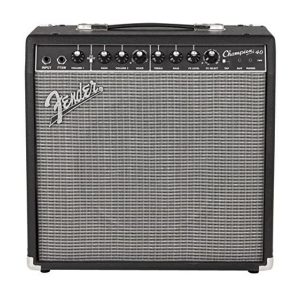
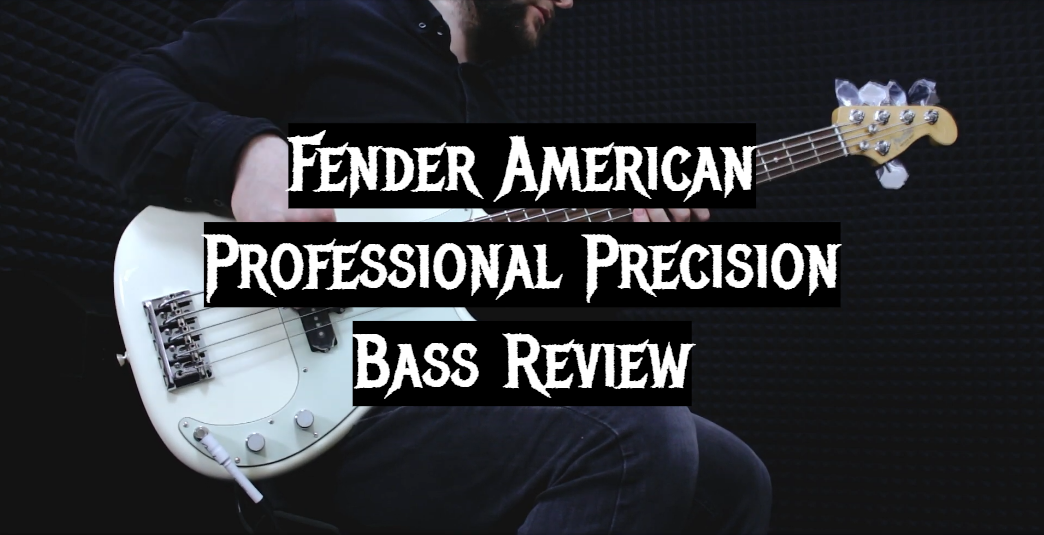
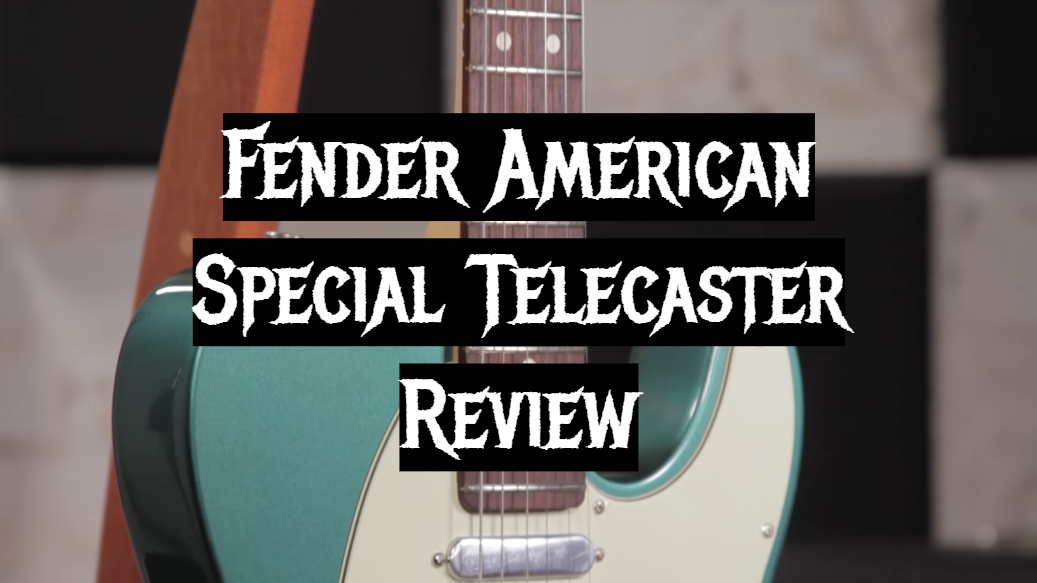
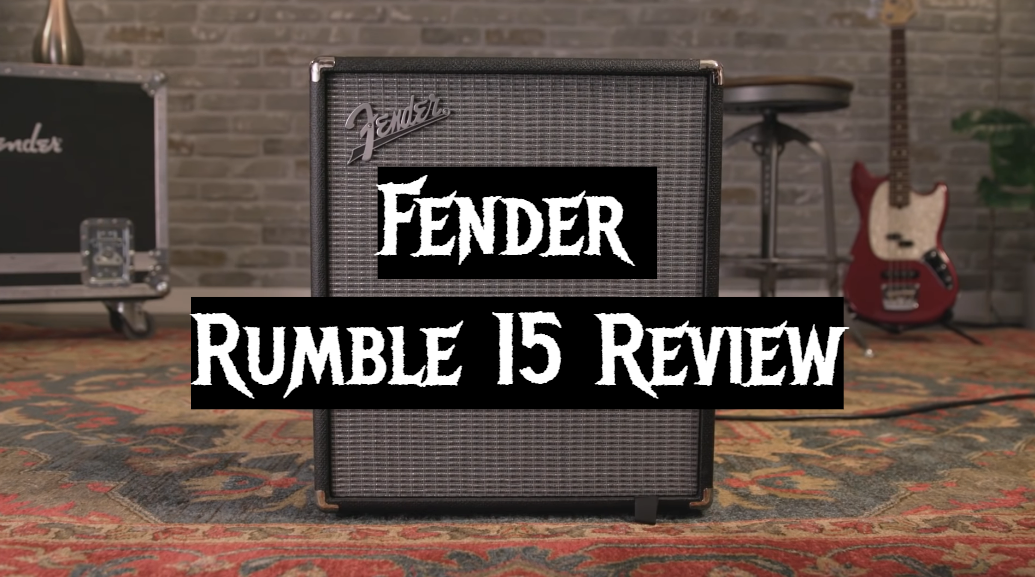
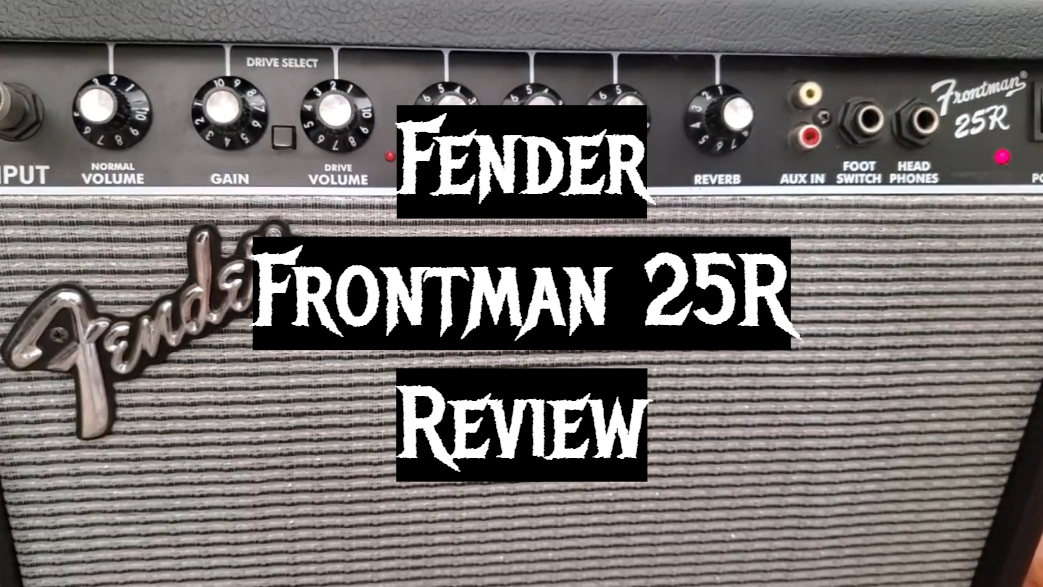
Leave a Reply